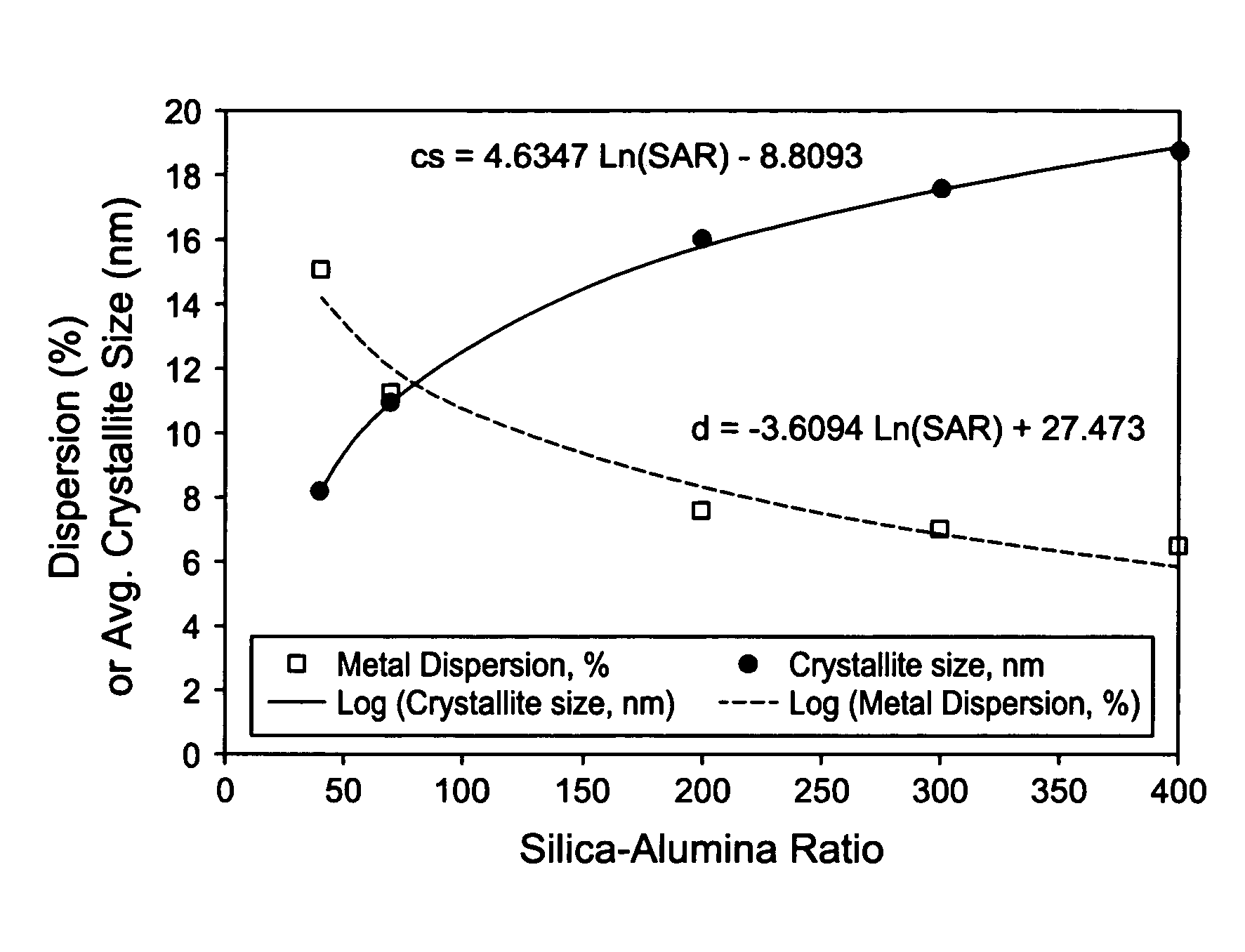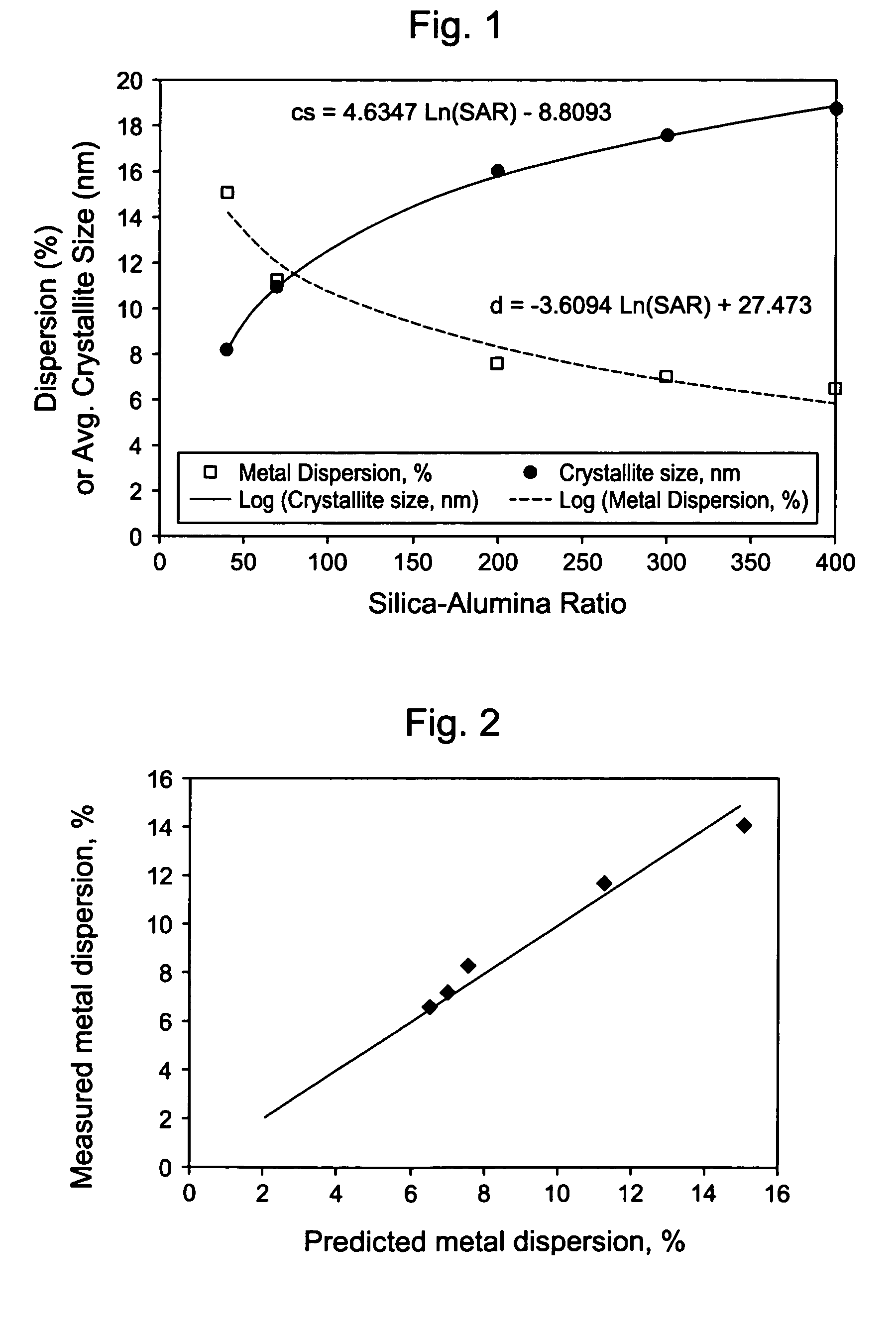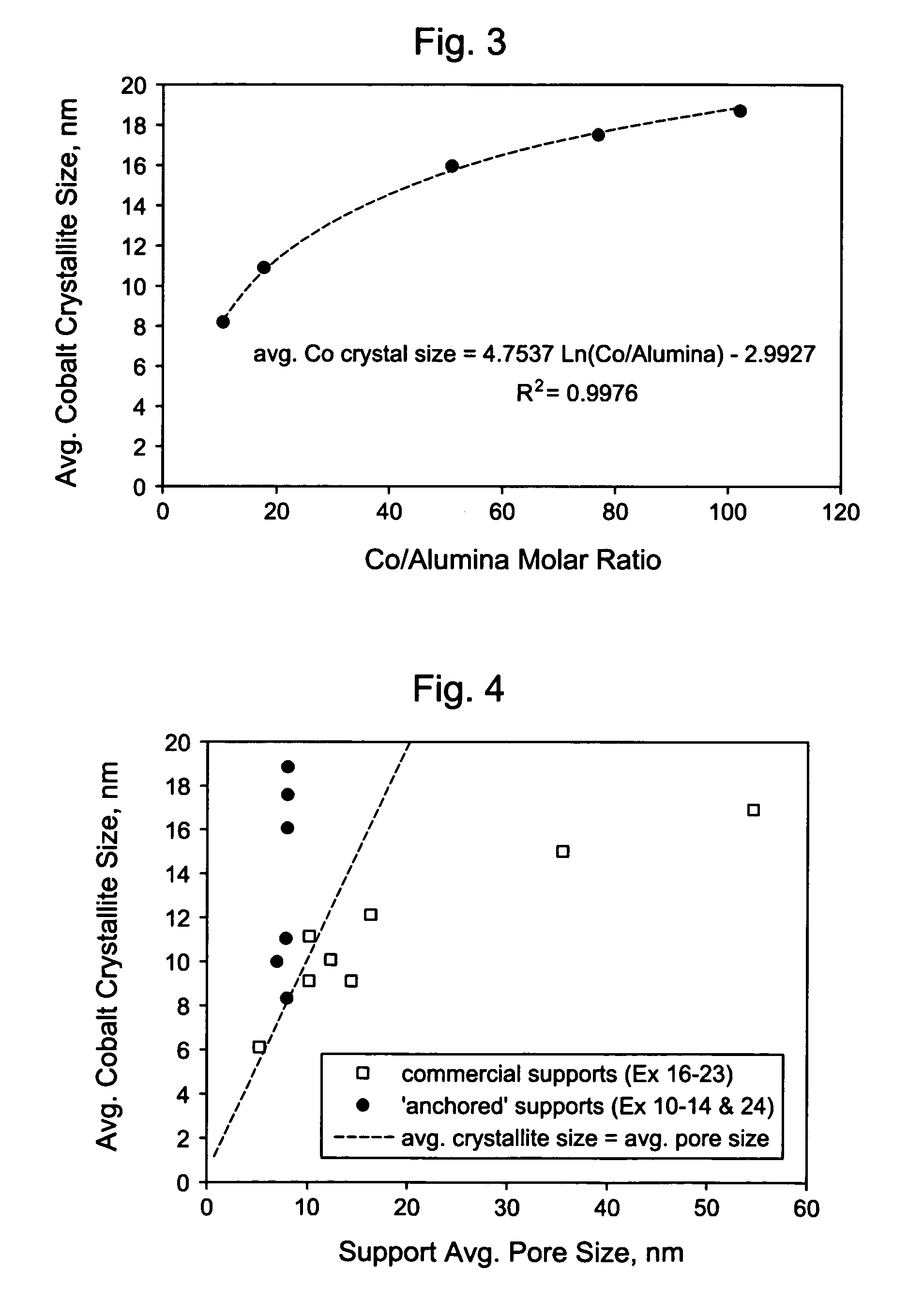Silica-alumina catalyst support, catalysts made therefrom and methods of making and using same
a technology of catalysts and alumina, which is applied in the direction of physical/chemical process catalysts, metal/metal-oxide/metal-hydroxide catalysts, other chemical processes, etc., can solve the problems of increasing the cost of natural gas, and reducing the natural resource of crude oil used for liquid fuels, etc., to achieve the effect of improving the catalytic performan
- Summary
- Abstract
- Description
- Claims
- Application Information
AI Technical Summary
Benefits of technology
Problems solved by technology
Method used
Image
Examples
examples
[0110]The invention having been generally described, the following EXAMPLES are given as particular embodiments of the invention and to demonstrate the practice and advantages hereof. It is understood that the examples are given by way of illustration and are not intended to limit the specification or the claims to follow in any manner.
examples 1-9
[0111]These examples1-9 illustrate that physical properties of a silica-alumina support can be controlled by controlling the preparation of the support so as to select the gelation pH in relationship to the silica-alumina ratio. Specifically, Examples 4-8 illustrate that the method of making catalyst supports according to this invention results in making different silica-alumina materials with varied silica to alumina ratios and yet with the same average pore size. Preparation of the supports is described in Examples 1-8. Characterization of the BET surface area, average pore size, and pore volume of the supports is described in Example 9.
example 1
[0112]Sodium aluminate and sodium silicate were co-precipitated with the addition of diluted nitric acid. The amounts of sodium aluminate and sodium silicate were selected so as to produce a ratio of moles silica to moles alumina of 30. A hydrogel was obtained within 30 minutes, and the gelation pH was 11.0. The gel was then aged for three days at room temperature. Thereafter, ion exchange was performed with a 1.0 molar ammonium nitrate solution to convert it from the Na+ to H+-form. Next, the hydrogel was washed with water to remove most of the ammonium nitrate. Finally, the gel was dried at 110° C. overnight and calcined in air at 550° C. for three hours. The resulting sample was then crushed and sieved before use.
PUM
| Property | Measurement | Unit |
|---|---|---|
| molar ratio | aaaaa | aaaaa |
| crystallite size | aaaaa | aaaaa |
| crystallite size | aaaaa | aaaaa |
Abstract
Description
Claims
Application Information
 Login to View More
Login to View More - R&D
- Intellectual Property
- Life Sciences
- Materials
- Tech Scout
- Unparalleled Data Quality
- Higher Quality Content
- 60% Fewer Hallucinations
Browse by: Latest US Patents, China's latest patents, Technical Efficacy Thesaurus, Application Domain, Technology Topic, Popular Technical Reports.
© 2025 PatSnap. All rights reserved.Legal|Privacy policy|Modern Slavery Act Transparency Statement|Sitemap|About US| Contact US: help@patsnap.com



